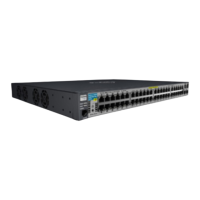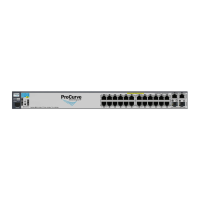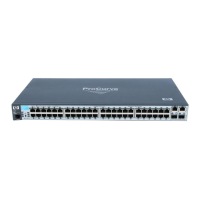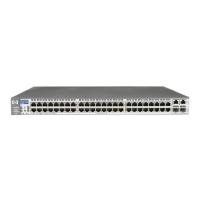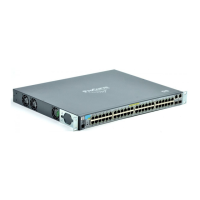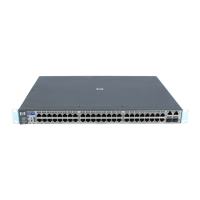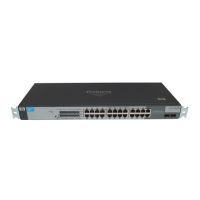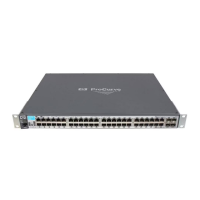Static Virtual LANs (VLANs)
Port-Based Virtual LANs (Static VLANs)
2610 Switch
VLAN 1
VLAN 2
Multiple-Forwarding
Database Switch
VLAN 1
VLAN 2
Both switches have
multiple forwarding
databases.
Figure 2-10. Example of a Valid Topology for Devices Having Multiple-Forwarding
Databases in a Multiple VLAN Environment
Menu: Configuring VLAN Parameters
In the factory default state, support is enabled for up to eight VLANs. (You can
change the switch VLAN configuration to support additional VLANs. Refer to
table 2-1 on page 2-4.) Also, all ports on the switch belong to the default VLAN
(DEFAULT_VLAN) and are in the same broadcast/multicast domain. (The
default VLAN is also the default primary VLAN—see “The Primary VLAN” on
page 2-7.) In addition to the default VLAN, you can configure up to 29 other
static VLANs by changing the “Maximum VLANs” parameter, adding new
VLAN names and VIDs, and then assigning one or more ports to each VLAN.
Note that each port can be assigned to multiple VLANs by using VLAN tagging.
(See “802.1Q VLAN Tagging” on page 2-30.)
To Change VLAN Support Settings
This section describes:
■ Changing the maximum number of VLANs to support
■ Changing the primary VLAN selection (See “Changing the Primary VLAN”
on page 2-26.)
1. From the Main Menu select:
2. Switch Configuration
8. VLAN Menu . . .
1. VLAN Support
You will then see the following screen:
2-15
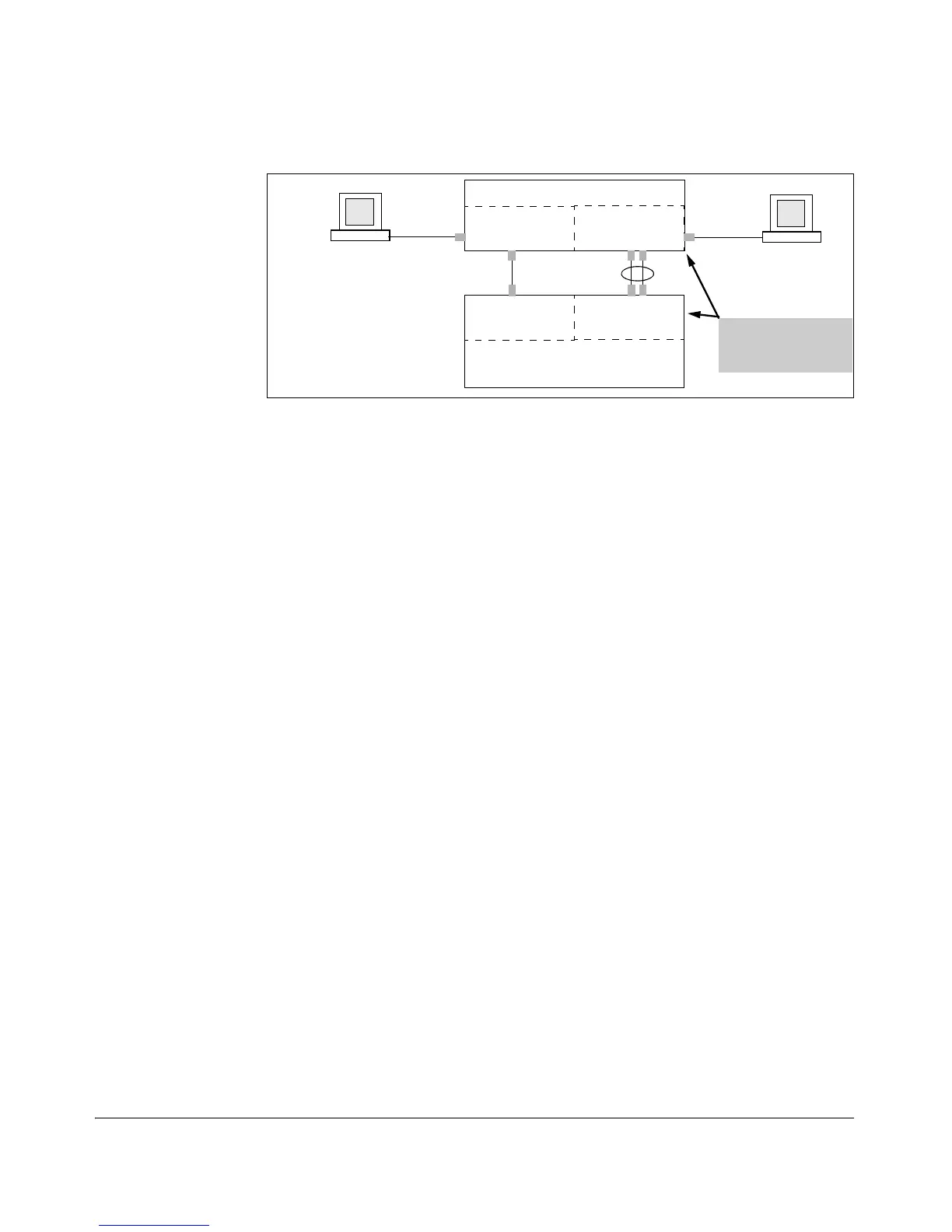